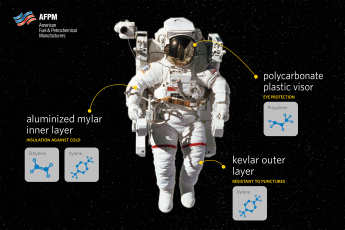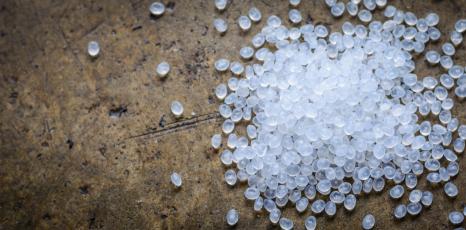It’s that time of year again, when basketball fans across the US pin their brackets up on their walls as the nation’s finest college teams battle it out for top honors. But if it wasn’t for petrochemicals, not only would March Madness lose some of its madness, but the sport as we know it today would look very different.
The first basketballs were made from a rubber bladder with leather patches stitched around them. Nowadays, the outside covering of modern basketballs are made of synthetic rubber, a key component of which is the petrochemical butadiene. The rubber bladder still remains inside the basketball, which these days is made of butyl rubber – from the petrochemical isobutylene – and the carcass inside the ball is made from nylon thread. Nylon begins with butadiene and benzene.
Moving from the ball to the players and court itself, the court is coated in a polyurethane coating, which uses benzene or toluene as a starting material. The players’ jerseys are designed to absorb sweat and ensure it evaporates faster – so the shirts are made from a high-tech polyester as a result, using ethylene and xylene as its starting materials. The basketball nets are also made from polyester.
But it’s not only the players that have benefited from petrochemicals in basketball. Those watching the game have also benefited too: modern stadium seats are often made from polypropylene, and bottles of water at the stadium are made from polyethylene terephthalate (commonly known as PET), which is a polyester film.
Finally, the Jumbotron LCD display hanging from the ceiling uses many products made from petrochemicals, including polycarbonate, polyacetate and polymethylmethacrylate, which are used for wire coatings, electronics and circuit boards, and the LCD display itself.


